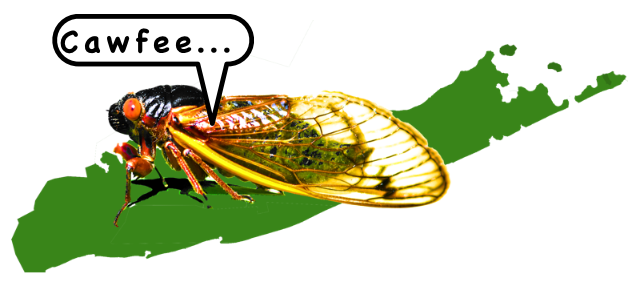Here’s the second set of Brood X Magicicada septendecim photos by Jim Occi. The photos were taken in New Jersey in 2021.
Magicicada septendecim:
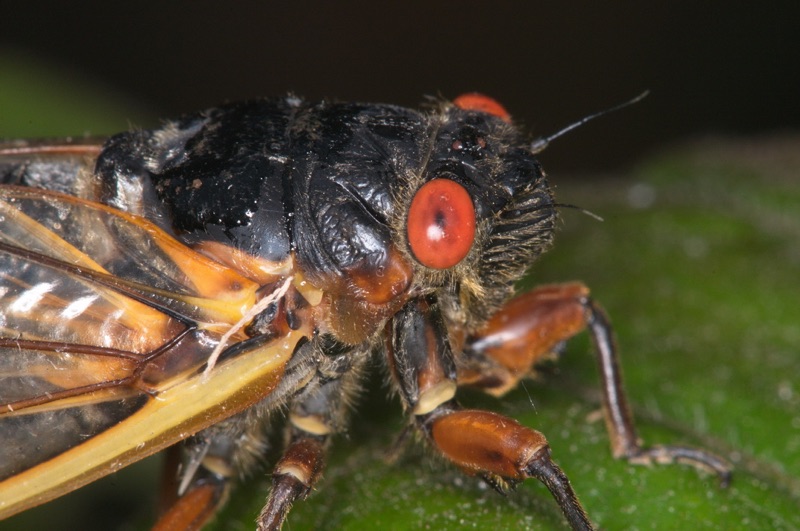
Magicicada septendecim:
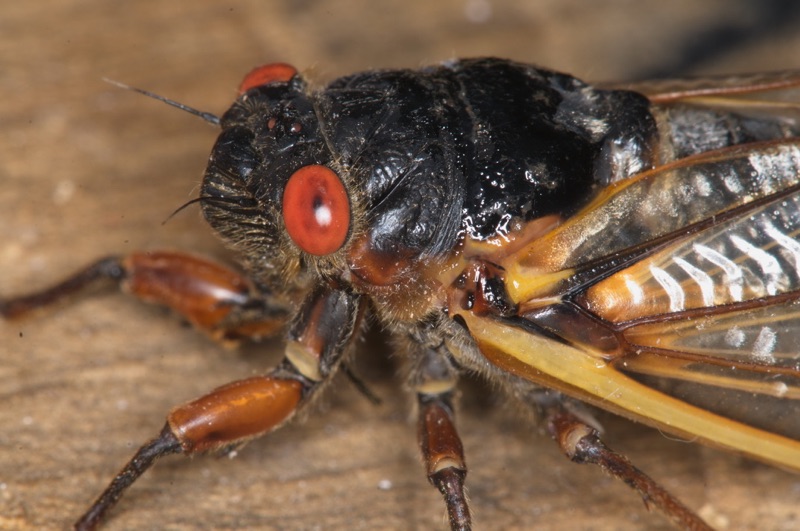
Magicicada septendecim:
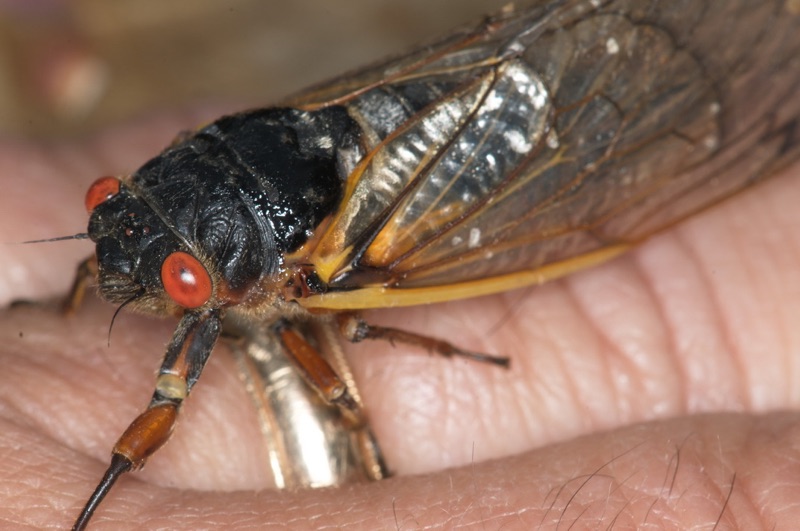
Magicicada septendecim:
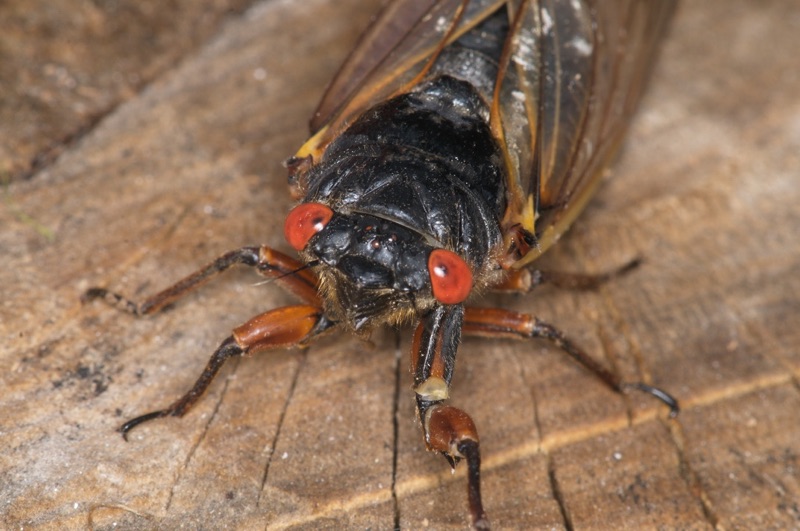
More photos by Jim:
Magicicada periodical cicada Broods.
Here’s the second set of Brood X Magicicada septendecim photos by Jim Occi. The photos were taken in New Jersey in 2021.
Magicicada septendecim:

Magicicada septendecim:

Magicicada septendecim:

Magicicada septendecim:

More photos by Jim:
Jim Occi has contributed photos to Cicada Mania since the 2004 Brood X emergence.
Here are 5 photos from the recent Brood X emergence in New Jersey:
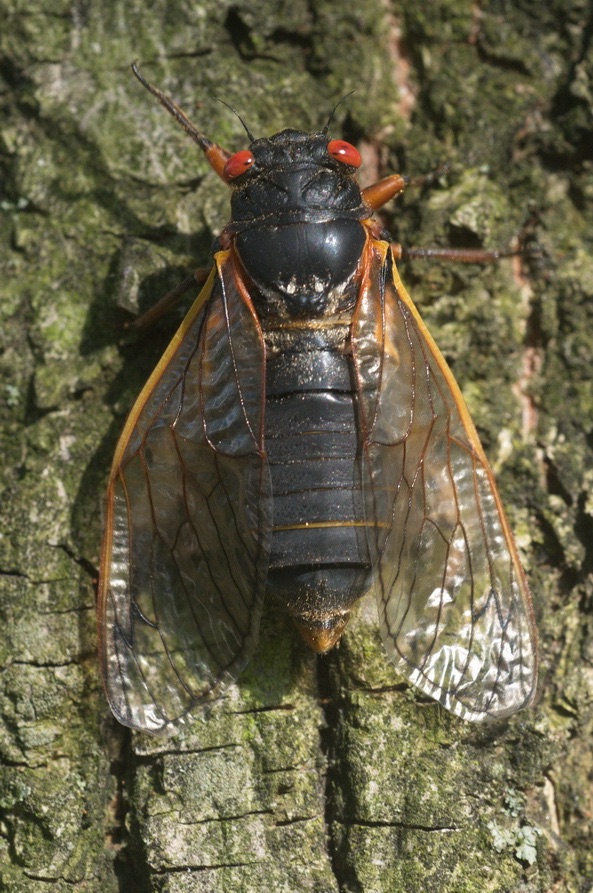
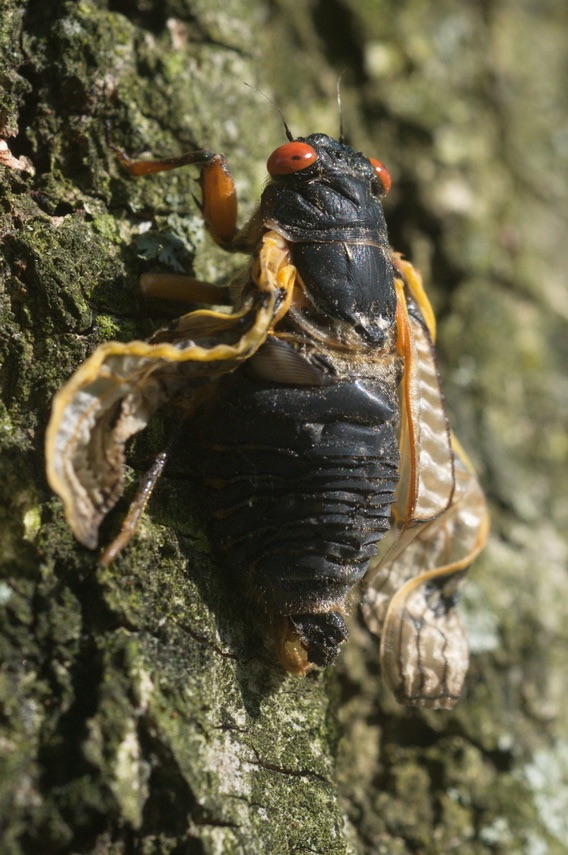
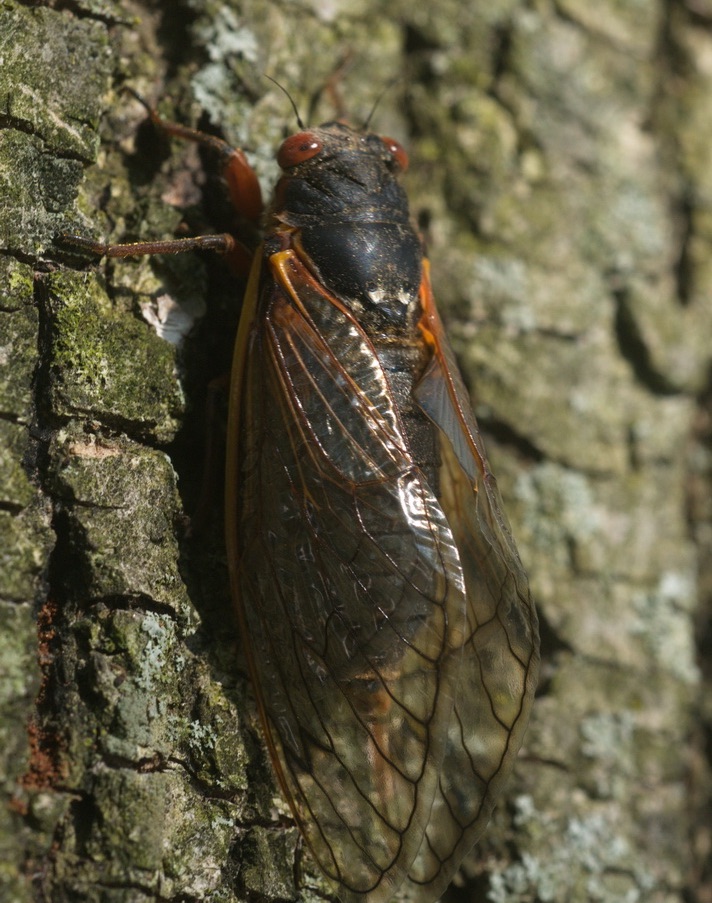
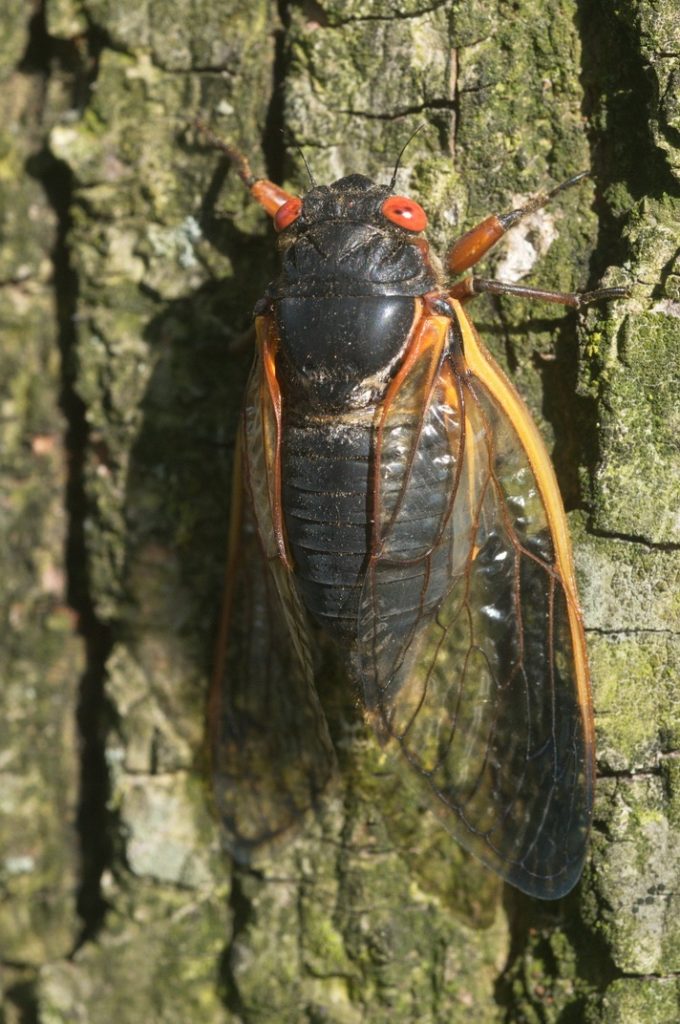
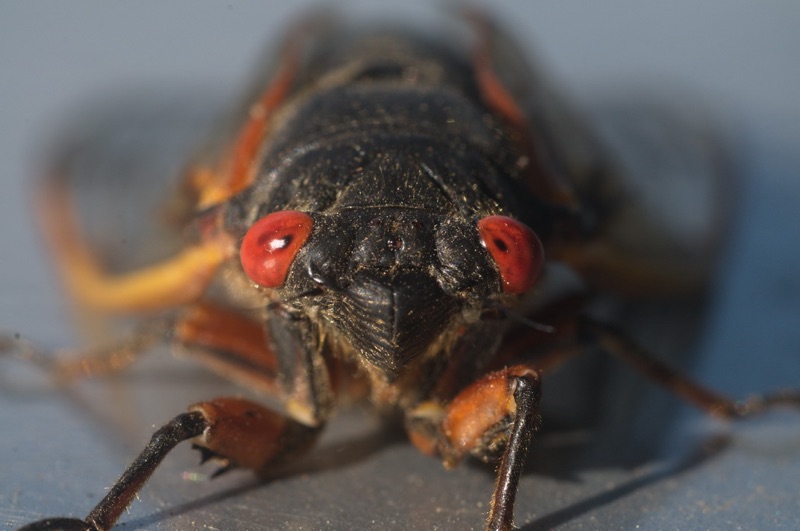
More photos by Jim:
The Princeton Battlefield (historical location of one of George Washington’s battles) has always been a great place to find Brood X periodical cicadas.
Here are a few photos I took last weekend:
A female Magicicada septendecim with white eyes & costal wing margin mating:
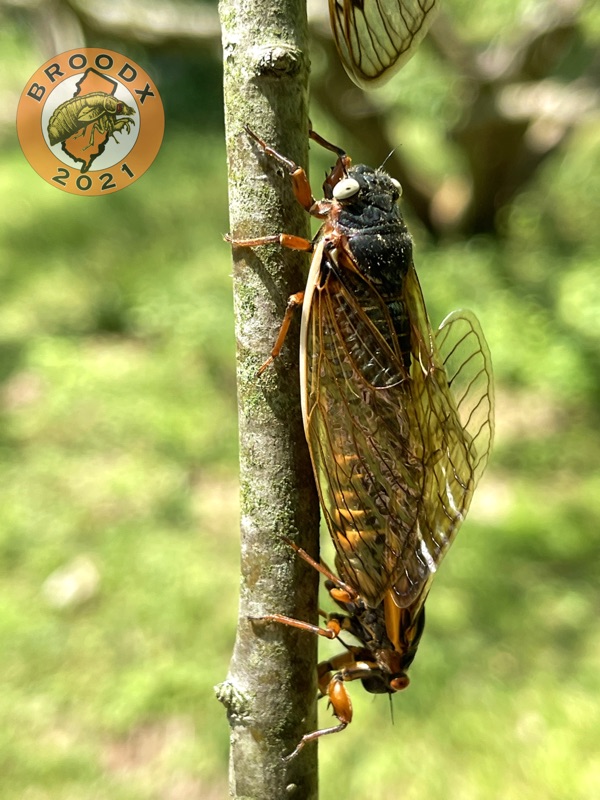
A female Magicicada septendecim with white eyes & costal wing margin:
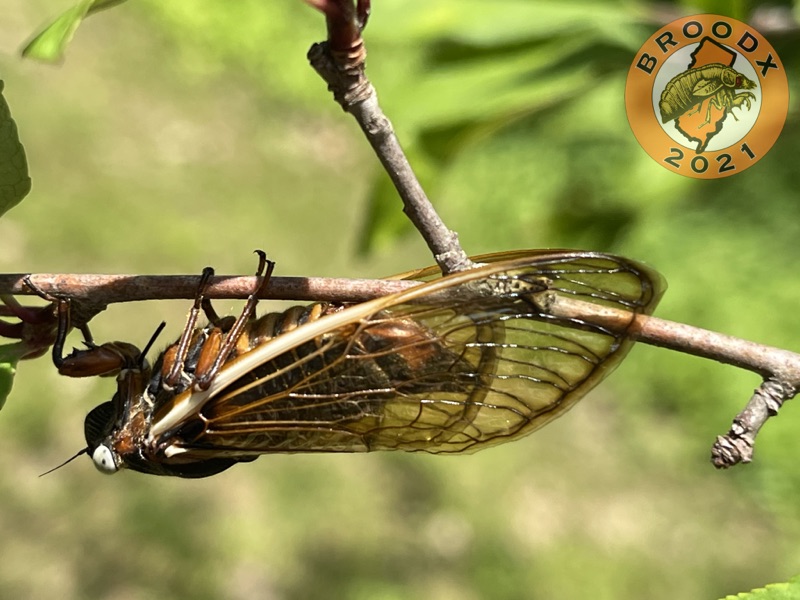
Magicicada with beige eyes:
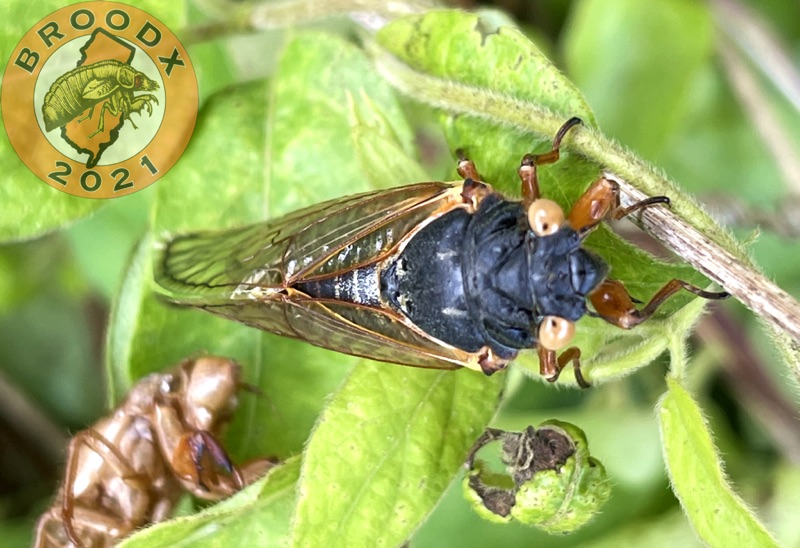
Many, many exit holes:
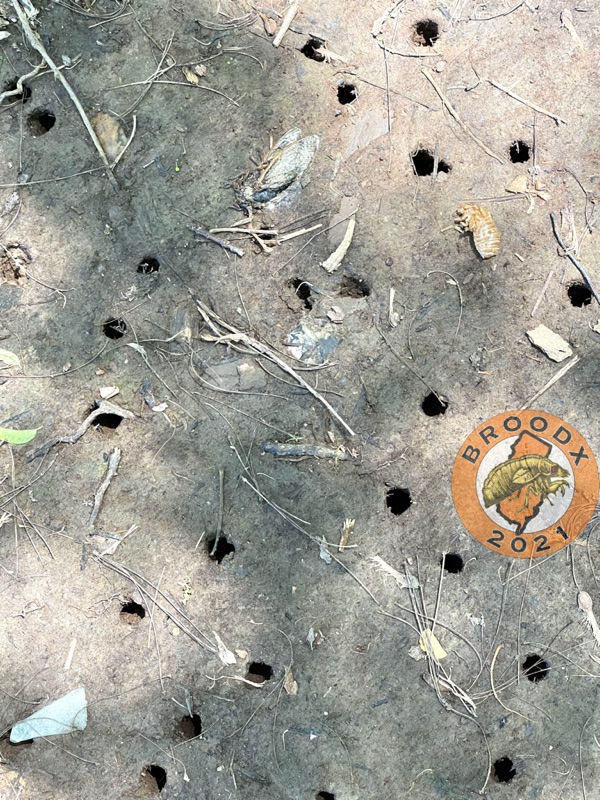
Triple exit holes in mud (kinda looks like a skull):
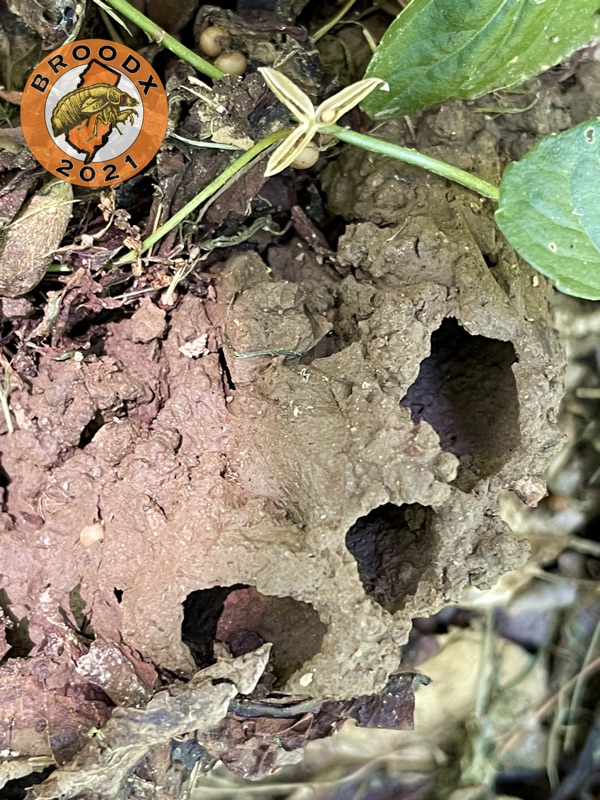
Egg nests carved into branches by the cicadas ovipositor:
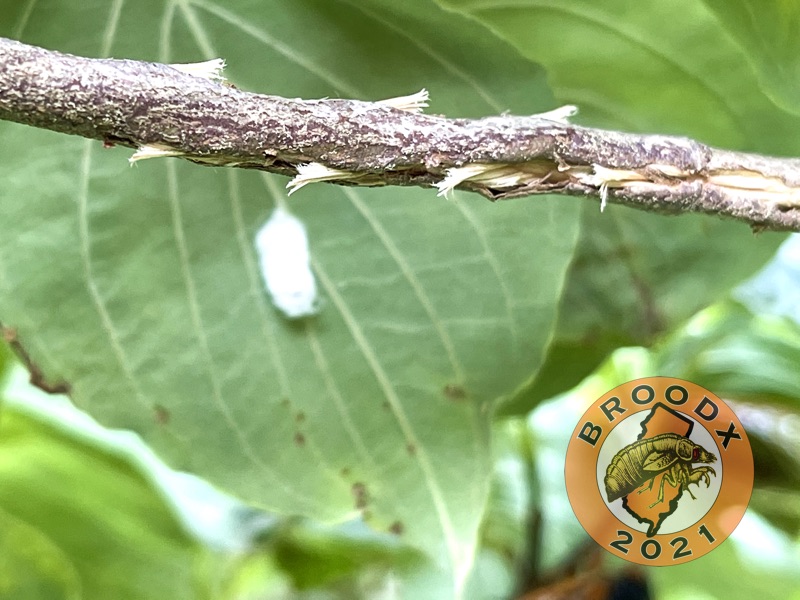
Brood X has emerged in Princeton, New Jersey, but the weather is currently not great for cicadas: less than 50°F and rainy. Undaunted, I visited Princeton yesterday to observe Magicicada cicada behavior on a cold, rainy day.
I arrived at Princeton Battleground State Park around 3:30 PM and immediately head to the short trees and tall weeds, like honeysuckle, that line the perimeter of the park. I was pleased to see hundreds of cicadas clinging to the leaves, stems, and branches of the plants — seemingly without extra effort or discomfort. Many were weighted down by droplets of rain, which seemed to roll off their bodies and bead on their wings like translucent pearls.
Even though temperatures were below 50°F I did hear an occasional distress call, and saw plenty of cicadas mating — perhaps they started mating before the rain and cold weather began. No flying. No calls, chorusing, or wing flicks.
Other than thousands of seemingly healthy but (patient) cicadas hanging from vegetation, there were plenty of malformed cicadas on the trunks of larger trees, and piles of exuvia and corpses circling tree trunks. The air around trees stank like ammonia and rotting fat and meat — not unlike a dumpster behind a burger restaurant.
I saw mostly Magicicada septendecim and some Magicicada cassini. No apparent Magicicada septendecula. I saw just one M. Septendecim infected with Massospora cicadina fungus. While there was plenty of avian activity in the area, I did not see any birds or other creatures feast on the docile or dead cicada — maybe I scared them away — maybe their appetites were satiated.
Cicadas dripping with rain:
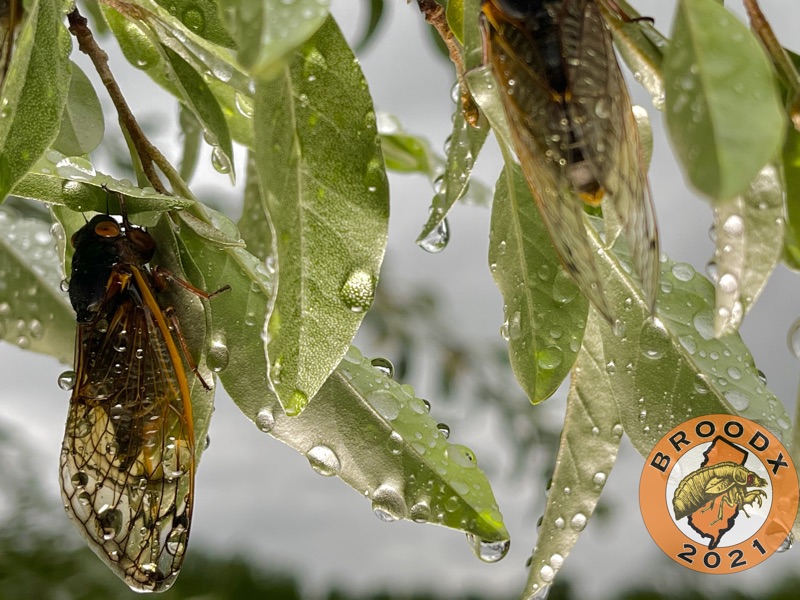
Cicadas mating:
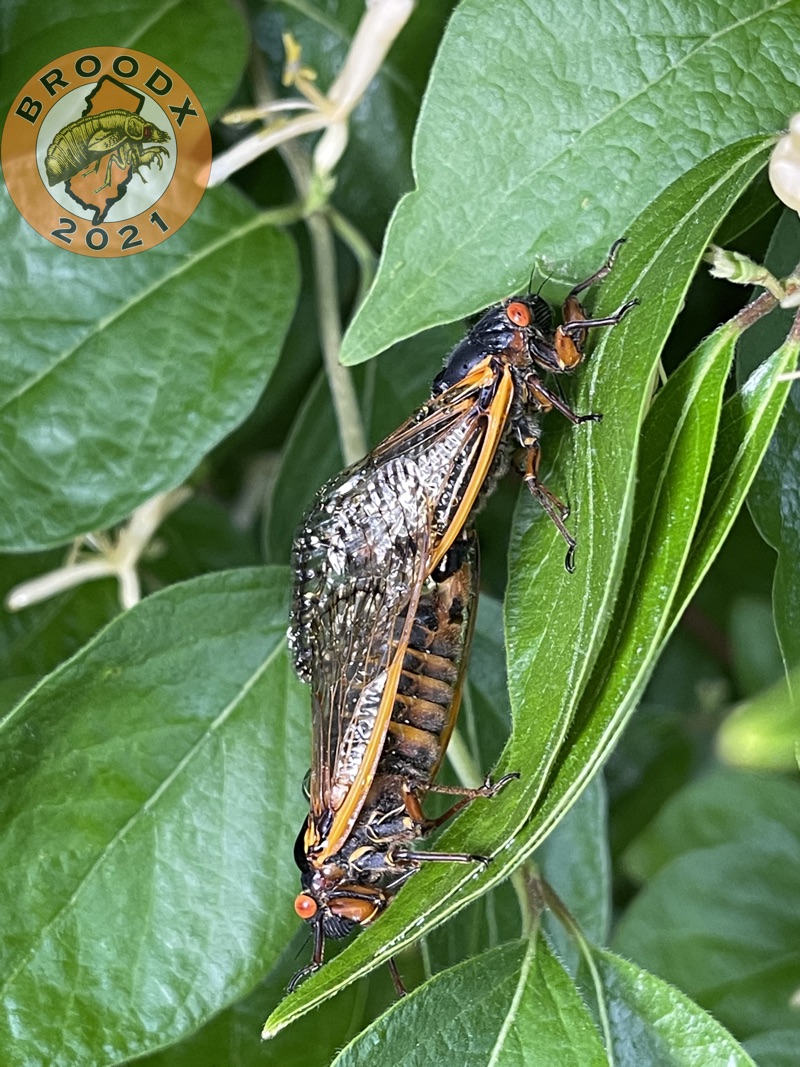
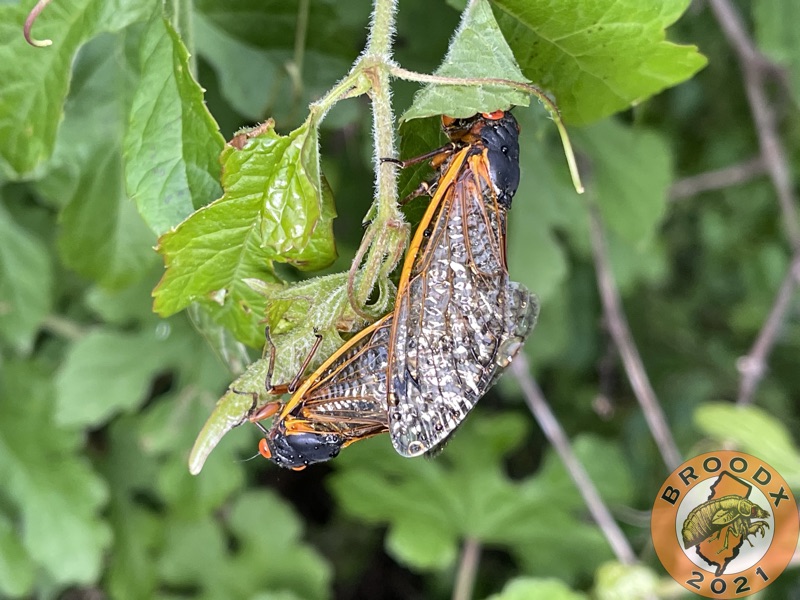
M. Septendecim infected with Massospora cicadina fungus:
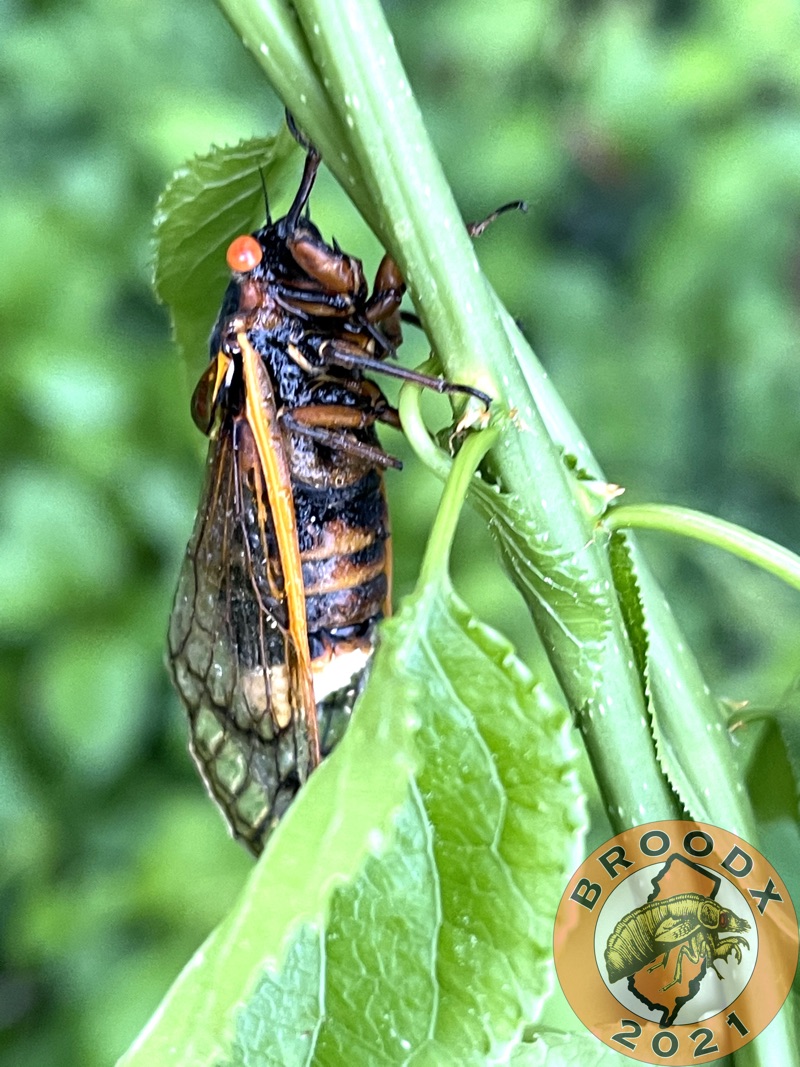
I’m surprised that this is the first rap song about Brood X I’ve heard so far.
Brood X-ellence, a rap about Brood X by EntoGeek. It’s pretty good.
On May 23rd I made it out to eastern Mercer County, New Jersey to too look for Brood X cicadas. Specifically, I made it out to West Windsor Township, its famous neighborhood Gover’s Mill, and nearby Plainsboro Township.
Overall the emergence in the area was underwhelming. Some holes, some exuvia (skins), and even fewer cicadas. Throughout the area, I heard individual calls by Magicicada septendecim and Magicicada cassini, but no choruses. I was there between noon and 5 pm. The temperature was somewhere between 85 and 90 degrees fahrenheit. The soil and air were very dry.
The best location was Van Nest Park in Grover’s Mill (in West Windsor). There, every suitable tree had a dozen or more exit holes around its roots. Most trees had at least 12 exuviae on them, and a few had cicadas crawling in them.
Van Nest Park is best known for the War of the World’s monument on its grounds. In this photo, Orson is sharing a mic with a cicada:
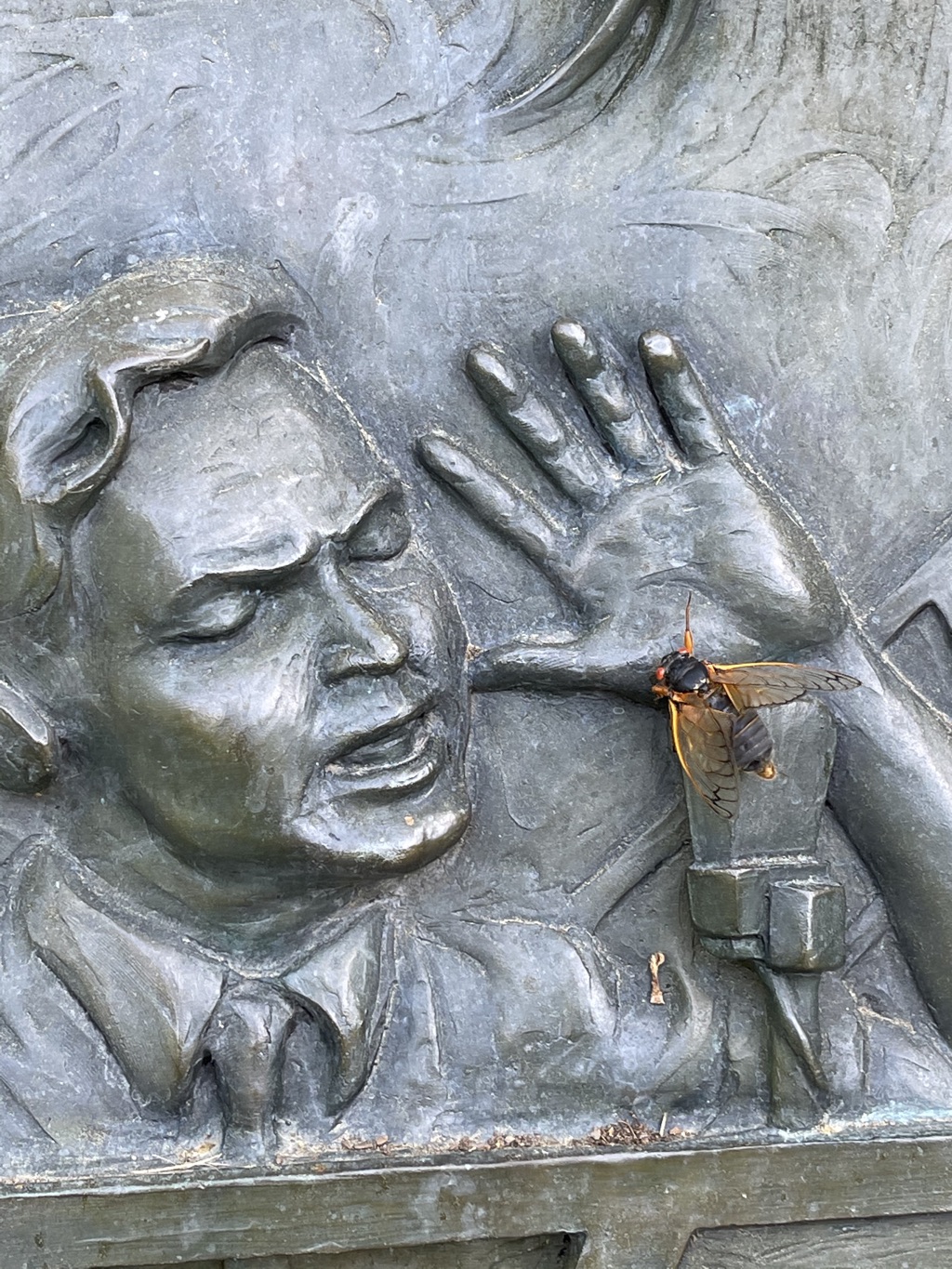
It breaks my heart to see cicadas with shriveled wings. This one was in Van Nest Park:
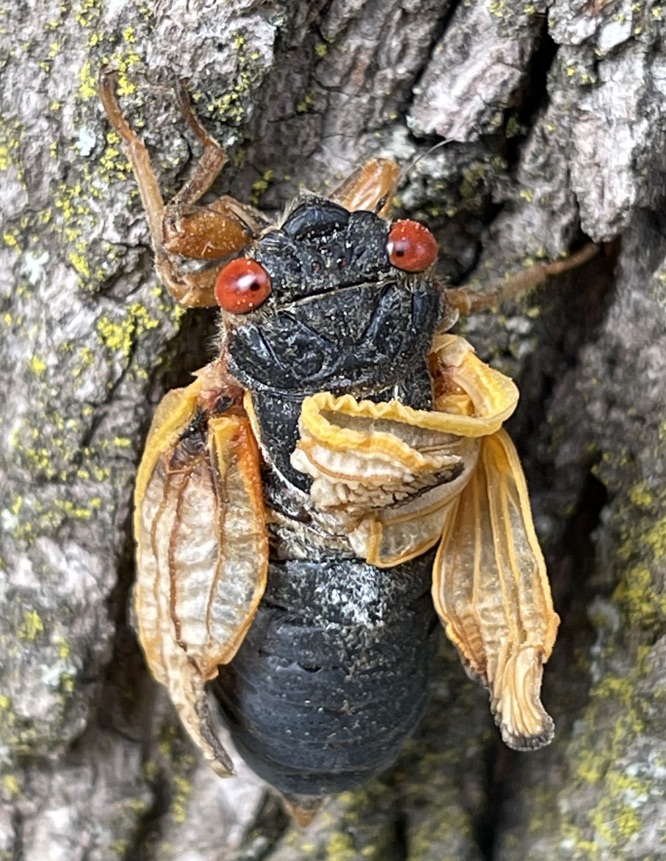
Ronald Roger’s Arboretum, also in West Windsor, had plenty of exit holes along its hiking trails, but very few exuviae, and only one audible singing Magicicada septendecim.
In Plainsboro, the Lenape Trail offered nothing in terms of cicadas, but I could hear cicadas singing nearby. Waters Edge Park had exuviae hanging from tree leaves, but no visible adult cicadas, and a few audible M. septendecim. I did see one fisherman using a cicada for bait.
Either the Brood X emergence was very light in this area, and most were wiped out by birds, or it is still early. I will do my best to check this location again to be sure.
Picture semi-related:

Brood X will emerge in 2021, and people will want to travel to see and hear them. Should you decide to travel to witness Brood X or any cicada emergence in the U.S., be cautious and considerate of the following:
Periodical cicadas thrive in neighborhoods and campuses with old hardwood trees and grass lawns, as you’ll find in places like Princeton, New Jersey. Don’t traipse and trample onto private property without permission and always visit local parks, instead of neighborhoods, when possible.
This should go without saying: obey local laws. Do not: litter, trespass, speed, j-walk, etc. Don’t give cicada fans a bad name.
Be prepared to practice social distancing and to wear a mask, even if just as a courtesy. I noticed that even outdoors in public parks, people in New Jersey wear masks.
Spotted Lanternflies are true bugs, just like cicadas, but they are very, very destructive pests and an “invasive species”. Like the Pennsylvania Department of Agriculture website says, they “cause serious damage including oozing sap, wilting, leaf curling, and dieback in trees, vines, crops and many other types of plants”! They kill the trees cicadas call home.
Pennsylvania and western New Jersey are loaded with Spotted Lanternflies, so if you travel to those states to see Brood X cicadas, make sure you check your vehicle and belongings for Lanternfly hitchhikers. Don’t bring them home with you. At this time of year, I believe they are still in their black phase.
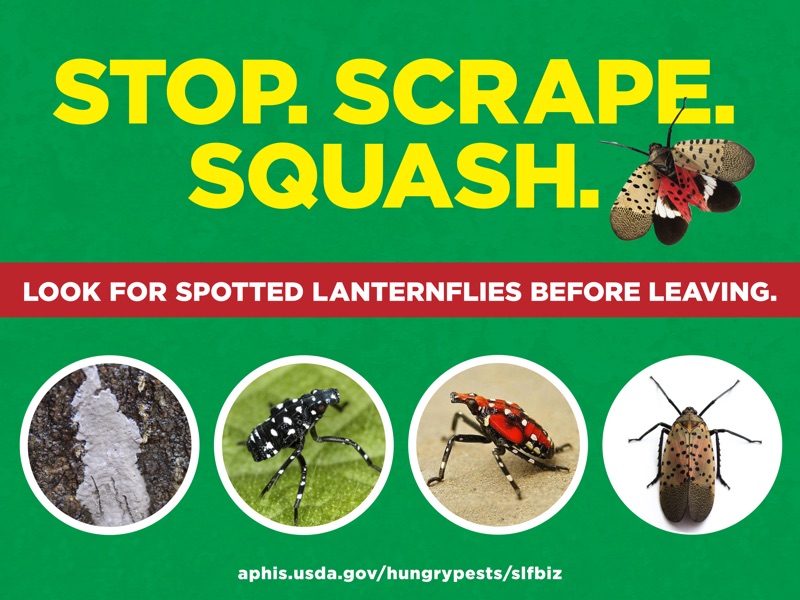
This sign is downloadable from the USDA website.
And squash them all — for the good of the forest and cicadas.
More info at the USDA website.
Long Island (NY), New Jersey, Pennsylvania, and nearby states are loaded with Lyme Disease carrying Blacklegged/Deer Ticks. I’ve known people who have Lyme Disease and it practically ruined their lives. Unfortunately, ticks are found in the same areas as cicadas, like parks, yards, and forests. The CDC website has tips for preventing tick bites on people that I highly recommend you read and follow their tips. I personally wear pyrethrum-treated clothes when outdoors in New Jersey.
From the CSC.gov website:
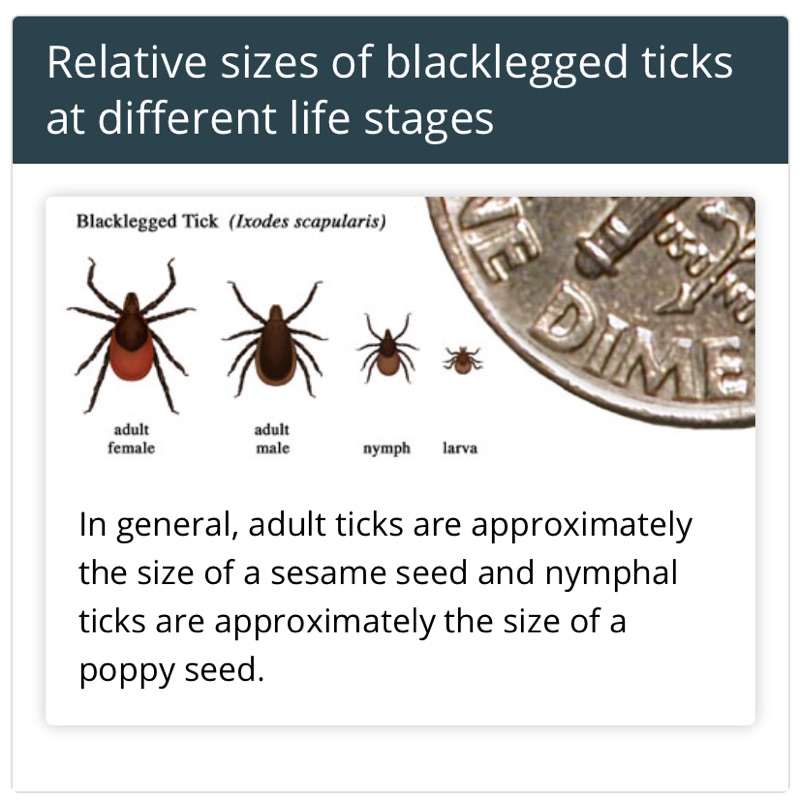
Different types of Magicicada periodical cicada holes found in Princeton, NJ. Brood X, 2021. Generally speaking, their holes are about the size of a dime. You won’t see a spray or kickback of soil around the hole like you would when an animal is digging into the soil rather than coming out of it (cicadas are coming out).
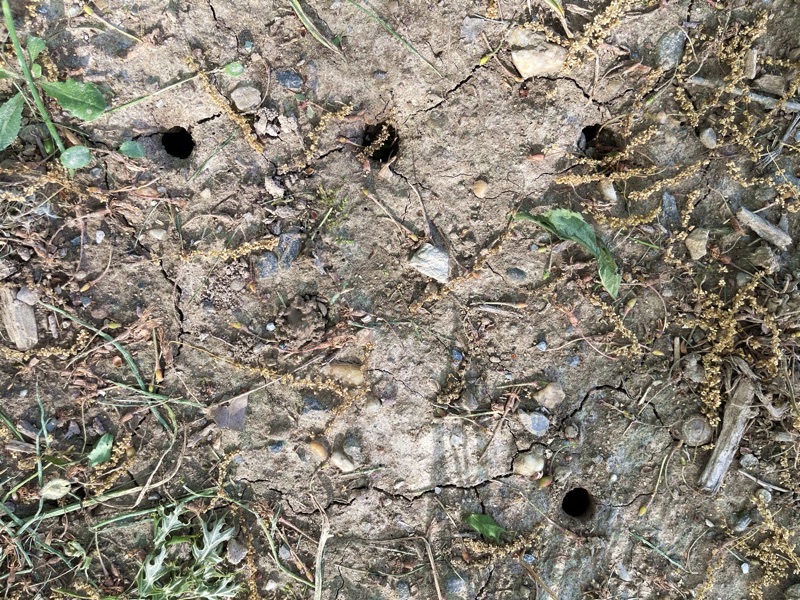
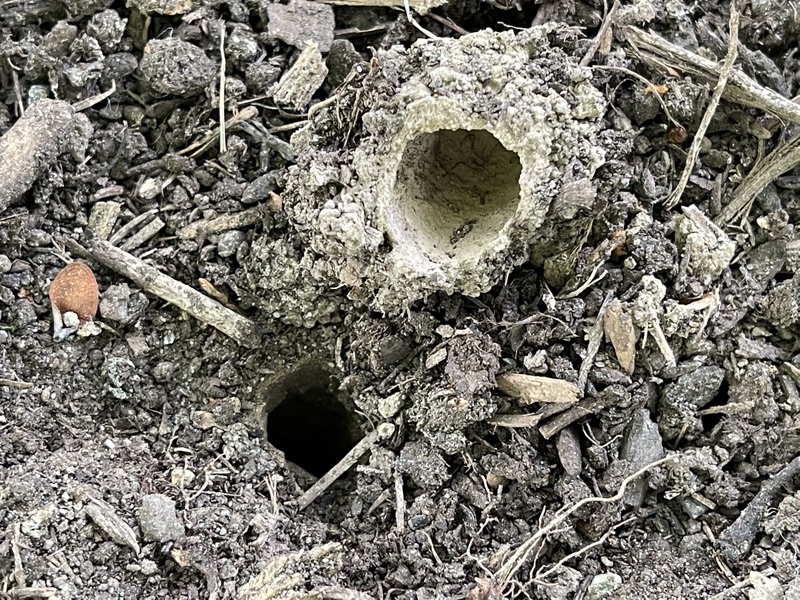
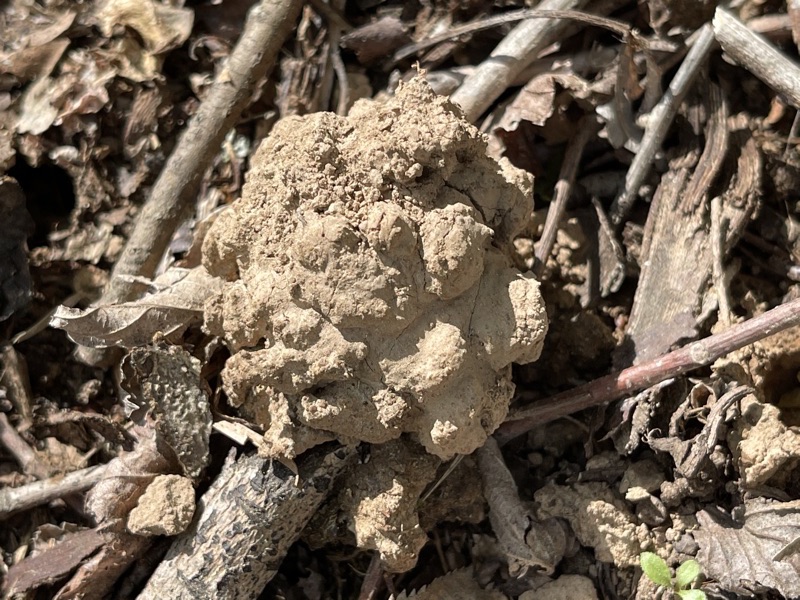
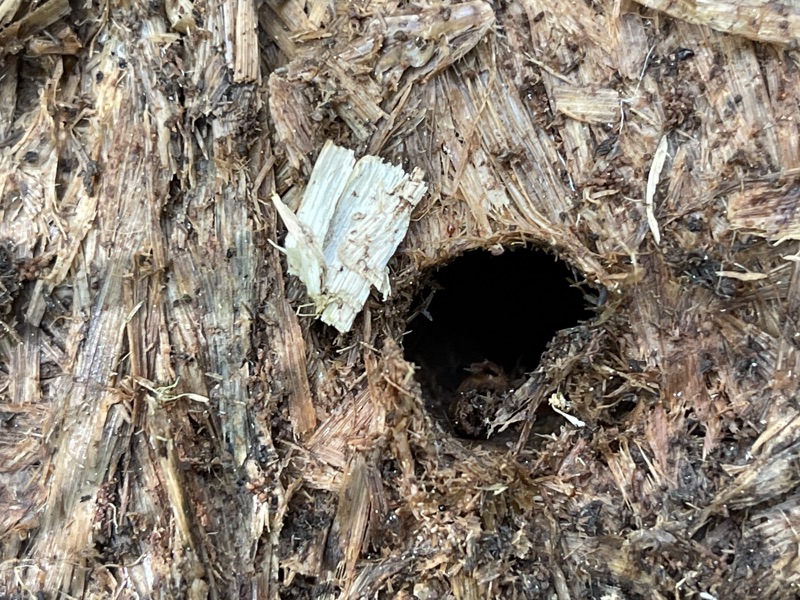
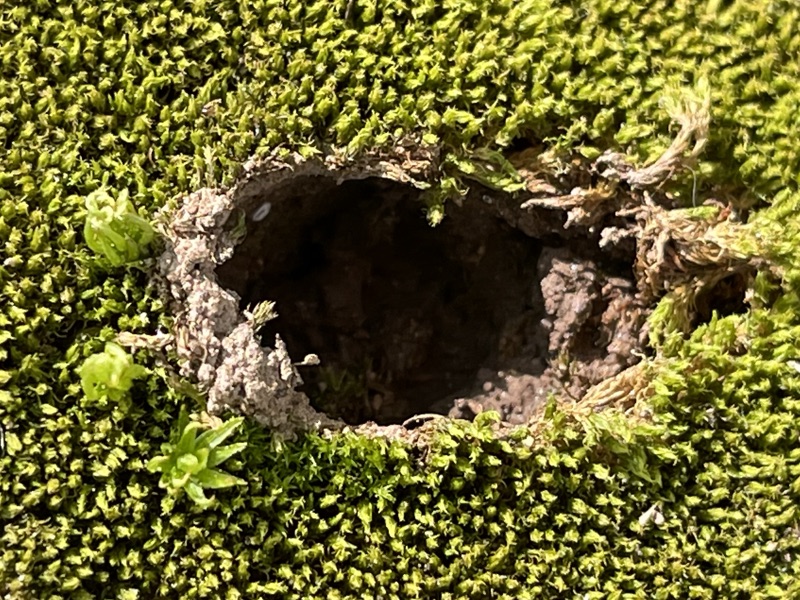
Cicadas will burrow up from the soil of the ground and keep going into the rotting wood of a rotten log! I had to roll the log over to see it.
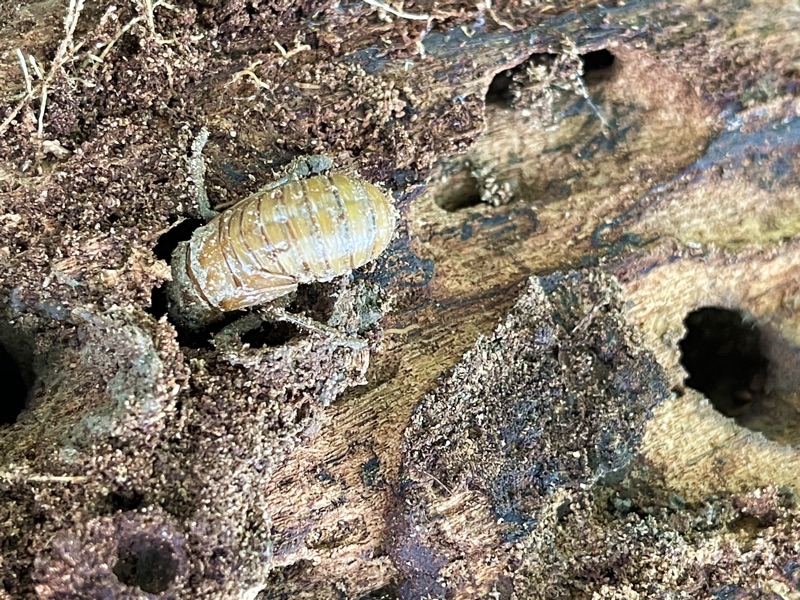
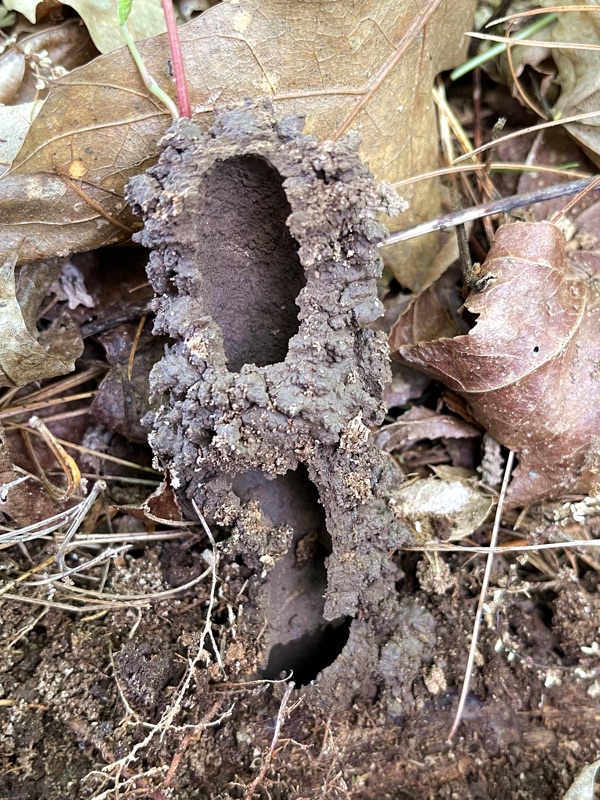
One of the most fun periodical cicada experiences is watching thousands of nymphs emerge from the ground at night, crawl to the nearest vertical surface (hopefully a tree) and begin to molt.
This is a video by Roy Troutman from 2007 of the Brood XIII emergence, specifically in Ryerson Woods in Illinois:
Observing magicicada emergence at Ryerson Woods from Roy Troutman on Vimeo.
Here’s a time-lapse video, also by Roy, of a cicada nymph molting:
Magicicada nymph molting from Roy Troutman on Vimeo.
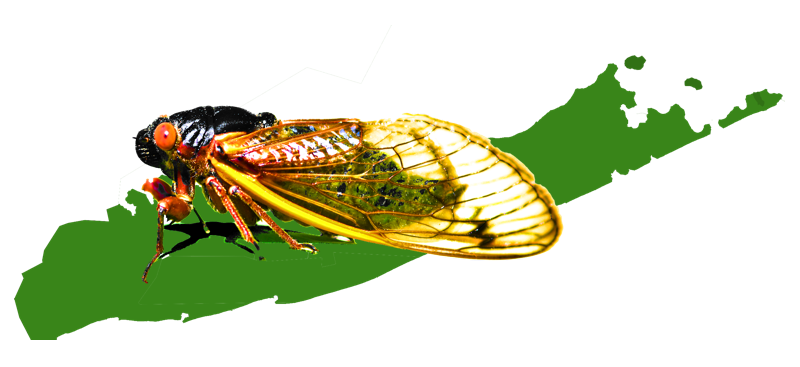
Elias Bonaros found cicadas in 2021 in Bohemia County Park and East Setauket.
Brood X periodical cicadas will emerge this spring (May) in the eastern U.S. — hopefully in Long Island as well. Chris Simon asked me to post this on the site. Brood X cicadas were hard to find in Long Island on 2004 — so we really want to find so, and how Long Islanders can help. Report cicadas with the Cicada Safari app.
Brood X may have breathed its last breath on Long Island! Or maybe not. This year may in fact reveal localities that we missed in 2004. It may capture people’s imagination just like the hunt for the last Ivory-Billed Woodpecker in Arkansas or the last Tasmanian Tiger in Tasmania.
Brood X cicadas were previously found on Long Island and it is unclear whether they are extinct or not! We are hoping to advertise the Cicada Safari app to your readers so they can help us find Brood X.
Attached is the Newsday article from 2004 that describes the previous Brood X emergence. Sites include Shirley, and Connetquot River State Park Preserve in Oakdale (Northeast section), and Ronkonkoma.
This locality info for Long Island is from the appendix of Simon and Lloyd 1982, J. N.Y. Ent. Soc.
It documents the historical decline of Brood X on Long Island as follows…
1902: Davis (1920) quoted the eighteenth report of the N.Y. State entomologist (1902. p. 113) as follows, “The insects were observed… at Wantagh. Nassau Co., also between Massapequa and Amityville, between Sayville and Oakdale, east of Patchogue to Brookhaven and also to the north of Medford and Holtsville, and a small brood [sic] northeast of Riverhead, all in Suffolk Co.” Davis (1907) reported that although a friend had seen hundreds of exuviae of the 17 -year locust in Prospect Park, Brooklyn. he had only obtained three adults and he “attributed their scarcity to the English Sparrow.”
1919: The New York Times of June 17th, 1919 (p. 25:3) talked with farmers in the vicinity of Farmingdale, Bethpage, and Massapequa who reported thousands of cicadas doing damage to fruit trees and other hardwoods. Old residents claimed that 17 years before they were not nearly so numerous. Daviis (1919) recorded” 1 7 -year cicadas singing at Mastic, L.L during the first week of June.” In another publication (Davis 1920) he noted them as occurring on South Country Road just cast of Carman’s River, and in the woods just east of Patchogue; also from Wantagh to Farmingdale and as far north as Central Park on Long Island; finally, north and east of Massapequa railroad station.
1936: The New York Times (June 12, 1936, p. 4:7) reported that the cicadas were found “first in Carmen Ave., Farmingdale … since then the swarms have been reported at Massapequa, and all through Suffolk scrub oak along the Motor Parkway from Medford westward to Farmingdale.” They were also seen along the Sunrise Highway in Massapequa Park.
1970: Newsday (June 5, 1970, p. 12) lists two exact localities Skylark Drive (Holtsville) and Springdale Drive (Ronkonkoma). They explained that “officials of the State Conservation Department and County Agricultural Extension Service said … that they have received hundreds of complaints this month about the insects. Most of the calls have come from an area including Ronkonkoma, Holtsville, Islip, and Sayville. where the influx is concentrated.” The same newspaper (June 23. 1970) reported 17-year cicadas in Bohemia on eighth Street near the South Side Sportsman’s preserve. They must have been abundant because “50 Bohemia residents … signed petitions appealing for help to fight the alarming problem of swarming cicada locusts [sic].”
Other, more recent, records…
1987: Suffolk Co. Long Island. Chris Simon and her student Andrew Martin collected periodical cicadas at Bohemia Equestrian Park in Oakdale and in Shirley.
2004: Suffolk Co. Long Island. Bryn Nelson of Newsday reports that periodical cicadas, “made only cameo appearances this year — first in East Setauket and later in Connetquot River State Park Preserve in Oakdale….Particularly vexing is the sputter at Connetquot, which reported masses of cicadas in its northeastern section both in 1987 and in 1970. Gary Lawton, a regional environmental education coordinator for New York State Parks, reported hearing a few cicadas at the park about three weeks ago….But after a few days, the calling abruptly stopped.” Residents of Shirley near the South Shore of Long Island, who saw them in 1987, did not see an emergence in their yards in 2004.
Some more locations from 1987 compiled by Thomas Kowalsick of the Cooperative Extension of Cornell University (specific addresses redacted):
Loughlin Drive, Shirley, NY
Happy Acres Drive, Shirley, NY
Malba Drive, Shirley, NY
Windus Drive, Shirley, NY
Peconic Street, Ronkonkoma, NY
Springdale Drive, Ronkonkoma, NY
Julia Goldback Avenue, Ronkonkoma, NY
Goldbach Avenue, Bohemia, NY
Connetquot River State Park, Oakdale, NY
Mayflower Lane, Setauket, NY
